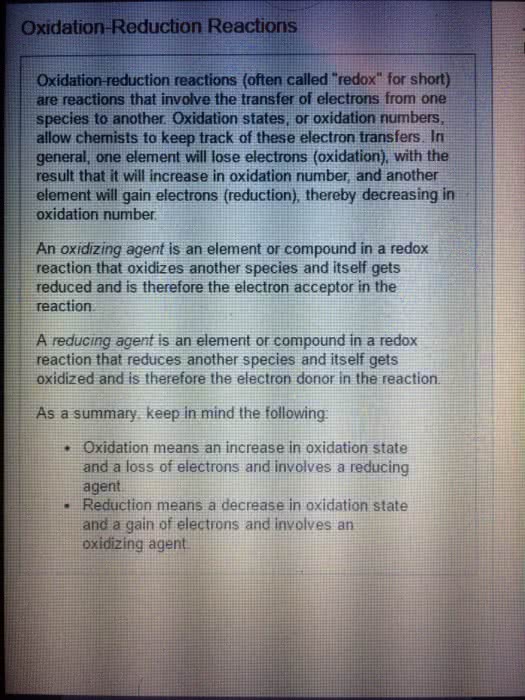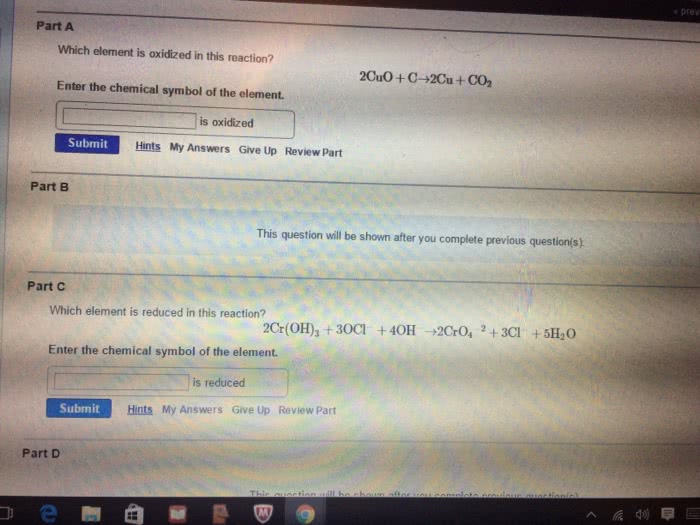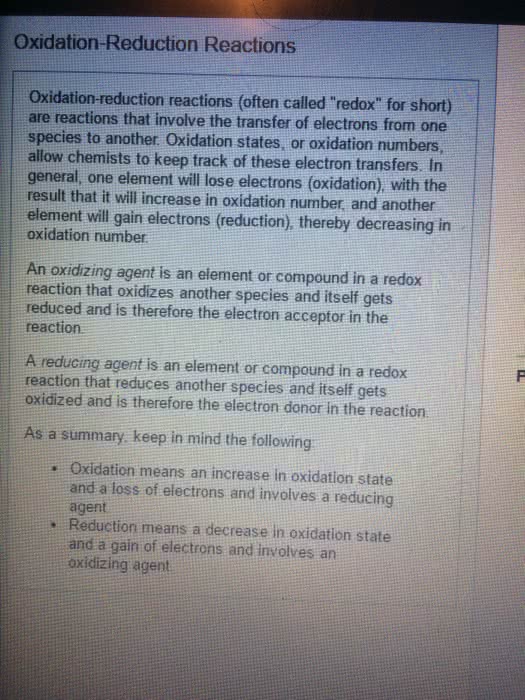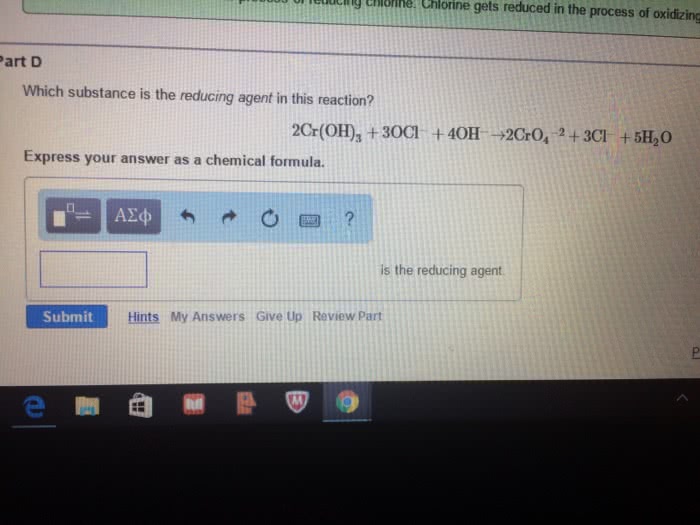CAS CH 112 Chapter Notes - Chapter 7: Cathodic Protection, Nernst Equation, Reducing Agent
Document Summary
Electrochemistry: study of chemical reactions involving transfer of electrons (e-) Involve the transfer of electrons between two chemicals. Oxidant/oxidising agent: causes something to be oxidised it is reduced. Reductant/ reducing agent: causes something to be reduced it is oxidised. Do not always correspond to real charges on atom. Monatomic ion (one atom) charge on ion e. g. k+ has oxidation number +1. Non-metals have negative oxidation numbers, can be positive. Hydrogen: +1 when bonded to non-metals, -1 when bonded to metals. Sum of oxidation numbers of all atoms in neutral compound is 0 e. g. h2o2. The of all atoms in polyatomic ion equals charge of ion sum of oxidation numbers e. g. h3o+ Electrons lost in oxidation must equal electrons gained in reduction. The overall balanced equation can be written down by adding the half-equations to eliminate electrons (simultaneous equations) Balance for o by adding h2o to o deficient side. Balance for h by adding h+ to h deficient side.





